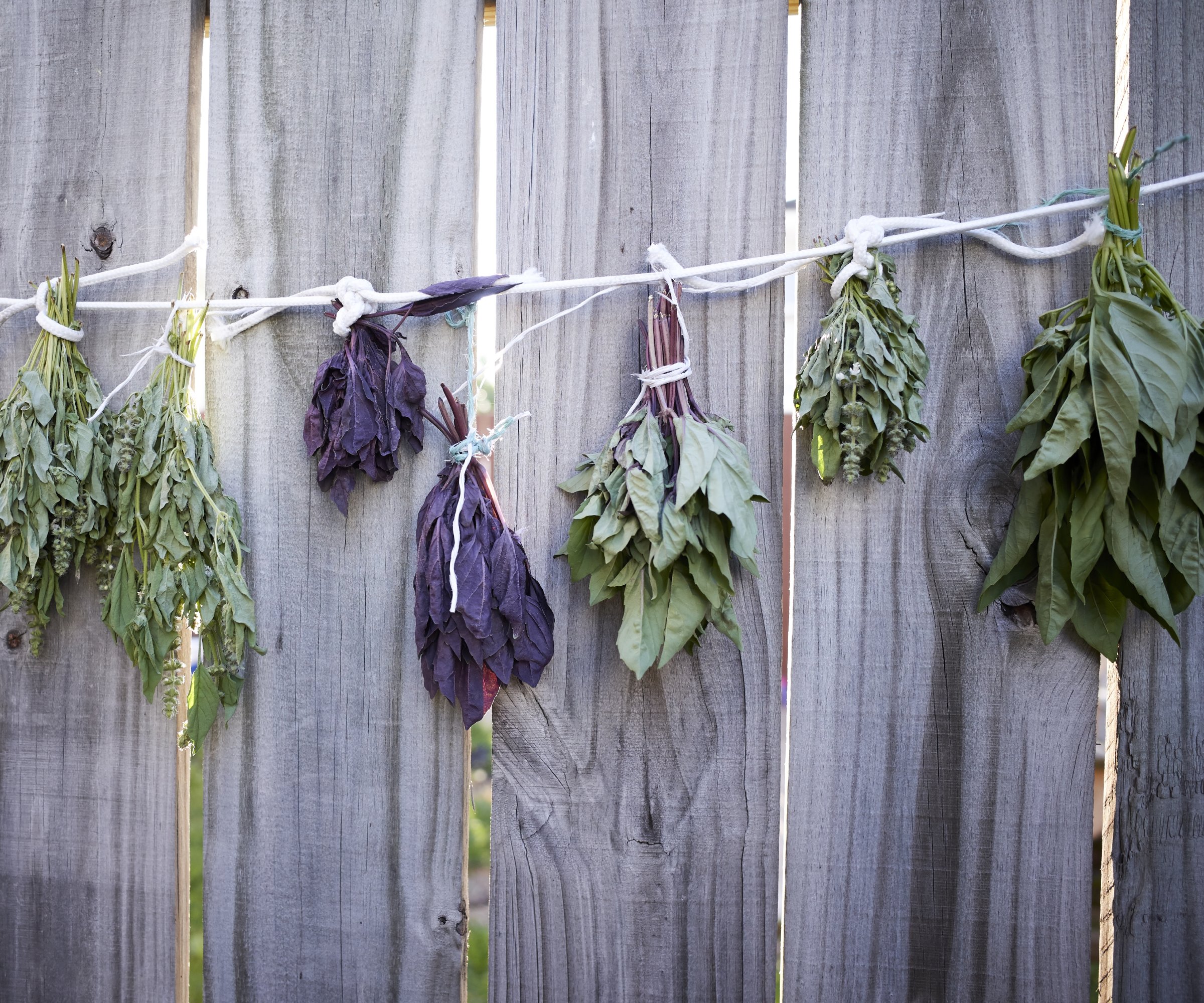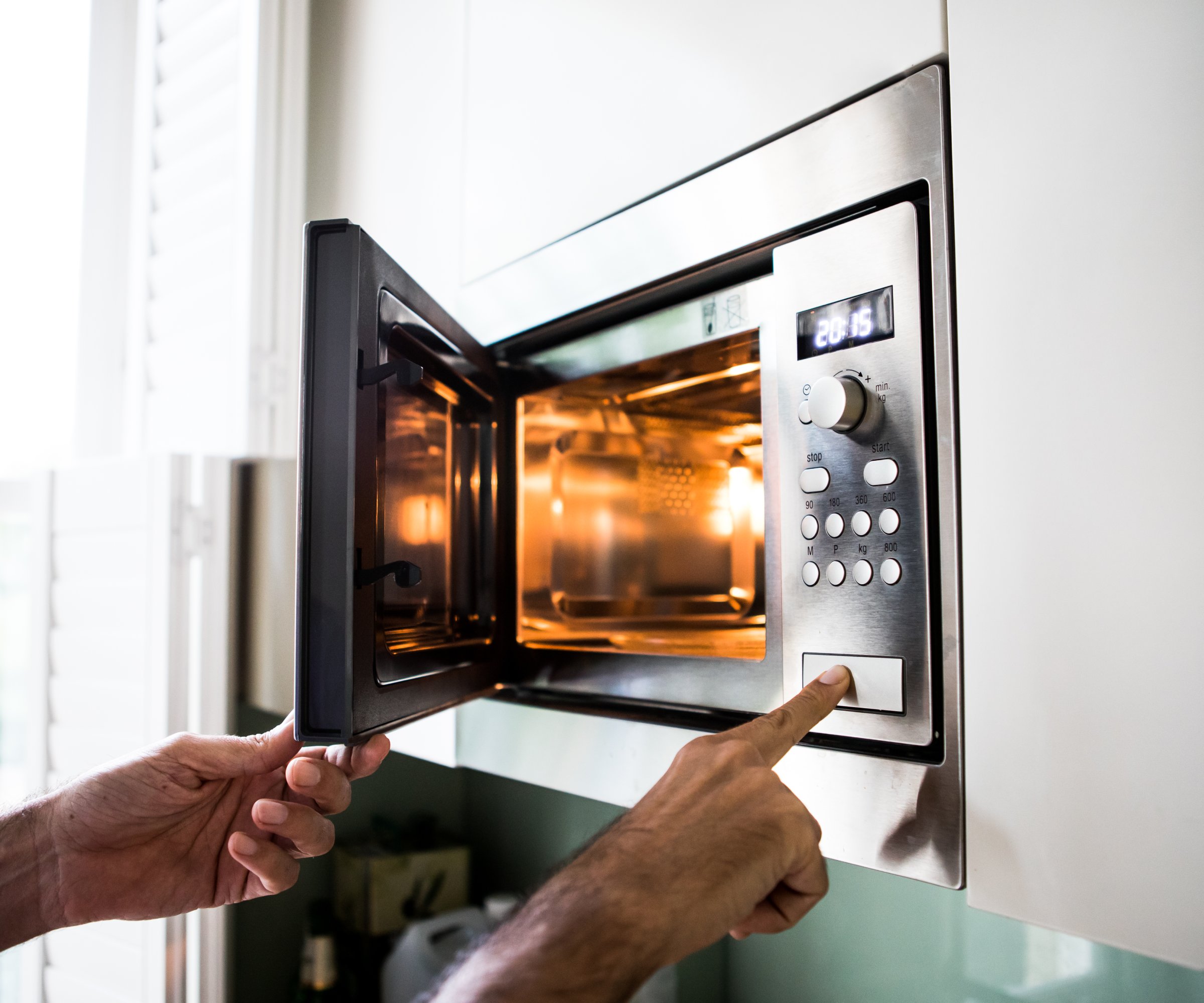How To Dry Basil From Your Garden - 3 Simple Techniques
Fresh basil can be dried in a food dehydrator, microwaved, or hung to dry. This will make it lose a bit of its fresh bite, but it'll keep for much, much longer.

Liz Baessler

Basil is one of the most versatile herbs, and one that can give you big yields in sunny summer weather. The plant's leaves are the main component of the flavorful pesto sauce, and are used fresh in salads, sandwiches, and many other recipes.
Basil will keep growing all summer, which means it can be harvested regularly throughout the growing season. As soon as temperatures begin to cool, though, it will start dying back. Even a light frost will strike it dead. So what can you do to save all those delicious leaves? Drying basil is an easy and effective way to keep that fresh summer taste, even in winter.
How to Dry Fresh Basil
Basil has a more intense flavor when it's fresh, but anyone who's had it in their kitchen knows that it degrades quickly. This is because the leaves have high moisture content, and it means they need to dry quickly to prevent molding. Air has to circulate freely around both sides of the leaf for the fastest drying.
Drying fresh basil is an easy way to preserve the fresh lemony-anise to spicy-pepper flavor of the herb. The first step is harvesting.
Harvesting Basil for Drying
If you're harvesting basil specifically for drying, you should do it in the morning, just after the dew has evaporated from the leaves, but before it gets too hot. When picking basil, always look for a growth node, or the spot where the main stem branches out. Sometimes you can even see small leaves starting to grow in the juncture between the stems. Make sure to cut your basil 1/4 inch (0.5 cm) above one of these growth nodes. This will encourage those tiny leaves to start growing into big, main leaves, and will lead to more basil down the line.
Remember, basil is chock full of water, and the dried leaves will shrink to about half their size when fresh. Because of this, if you're planning on drying them, you should pick about twice as many leaves as you'd think
There are three quick and effective methods for drying basil.
Sign up for the Gardening Know How newsletter today and receive a free copy of our e-book "How to Grow Delicious Tomatoes".
1. Hanging Basil to Dry

Air drying may be the slowest method, but personally I think it's the most satisfying. To hang basil to dry, cut your stems to around 6 inches (15 cm) in length, and tie them together with string. Keep this up until all of your basil has been tied into these little bundles, then hang them up to dry in a dark room with low humidity and warm temperatures.
Punch some holes in a paper bag (for airflow), and secure it around a bundle. Repeat this until each bundle of basil has been surrounded. The bag will catch dry bits of the leaves as they fall off, so all your hard work doesn't end up on the floor.
2. Drying Basil in a Dehydrator

If you have lots of herbs but don't have a food dehydrator, now may be the time to get one - like this well-reviewed dehydrator from Amazon.
Wash your basil first, and remove the leaves from the stems. Pat the leaves dry, and lay them out in a single layer in your dehydrator. Allow them to dry in the machine until they're completely crisp. Depending on your dehydrator model and the temperature you set, this can take anywhere from a couple hours to an entire day.
3. Drying Basil in the Microwave

If you're really crunched for time, it's possible to dry basil in the microwave. You'll have to keep a very close eye on it, though, to keep the leaves from scorching.
Separate your basil leaves from the stem, then wash and pat them dry. Lay them in a single layer on a paper towel, and microwave them on low for about 3 minutes.
Although three minutes is your goal, some leaves may dry up well before then, and that can lead to a smoky mess. Check on their progress every minute (or less!), and remove any leaves that have already dried. This should prevent them from burning.
Storing Dry Basil Leaves
Dried herbs naturally lose flavor over time - it's a fact of life. This process will speed up a lot, however, if they're left in the light. It's best to store your dried basil in a cupboard or dark pantry where light can't penetrate.
The container for storage must be dry and airtight, like these spice jars from Amazon. If you dried any stems or flowers with your leaves, remove them now. Crumble the leaves up, so they look just like the store bought stuff, and they'll be ready to use in recipes.
Dried basil is more concentrated and tends to be more potent than fresh basil. If a recipe calls for fresh, use 1/4 to 1/3 the amount of dried basil to achieve the same result.

Bonnie Grant is a professional landscaper with a Certification in Urban Gardening. She has been gardening and writing for 15 years. A former professional chef, she has a passion for edible landscaping.
- Liz BaesslerSenior Editor